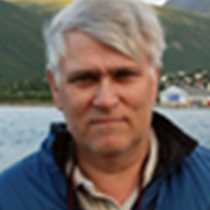SCOREBY SUND, EAST GREENLAND
Throughout the night we sailed from Sydkap for the outer parts of the world’s largest and longest fjord, Scoresby Sund. This morning we had allocated our activity in a very different way from our previous days in Greenland. Now it was time to encounter people!
The village Scoresbysund, or in East Greenlandic ITTOQORTOORMITT (meaning: those who live in the place where are many large houses), is the only settlement along the whole northeast coast.
The first humans to live here in northeast Greenland were the Thule people. The very last remains of them, only 12 people, were encountered still in 1822 as Douglas Clavering visited Clavering Ø. As the English whalers, later with William Scoresby Jr., explored and utilized the natural resources in the area they never again encountered any people.
In the early 20th century both Norwegian and Danish trappers had settled into the area, mainly to hunt polar bear and arctic fox. As soon as Norway had been established as a new nation in 1905, a clash between Denmark and Norway became more and more evident and in July of 1924 the Greenland Treaty was signed. Norway tried later to establish the territory, calling it Erik den Rödes Land, and appointed a governor, Helge Ingstad. Denmark on the other hand established a “colony”, the settlement of Scoresbysund in 1925.
The plan was to establish the settlement far inside the protected and very sheltered Scoresby Sund but harsh ice conditions forced them to set it at the entrance of the fjord system. Settlers from western Greenland were forced to move into the area and nowadays the village house about 500 inhabitants.
As National Geographic Explorer this morning dropped anchor we were the first ship for nine months to be visiting ITTOQORTOORMITT. Locals were lined up and happy to see visitors as they had not received any provision ships yet for the summer. The mayor kindly requested the ship to spare some milk and other basic food and we received plenty of locally caught arctic char in return.
As we strolled through the colourful village we rapidly confirmed old Inuit hunting traditions. At three houses large white polar bears skins were hanging to dry together with muskox and seal skins. The local museum and tourist office gave us opportunities to learn more about this very isolated settlement and also support the local economy and taste muskox meat.
We also made a visit to the dog pen to encounter real Eskimo dogs. Pups are always very cute but as adults they are forceful and strong workers, and not really to be called pet dogs! At 11:00 a.m. some went to the metrological station as they released the weather balloon.
More surprising for many was to find a monument erected to commemorate Jean-Baptiste Charcot. He was the French explorer to sail in the Antarctic Peninsula 1903-05 and 1907-09. After 1909 he never returned south. Instead he dedicated his polar research for the Arctic, his original plan before he headed south in 1903.
He visited Scoresby Sund area seven times and during his voyage back to France in September 1936 his ship, “Pourquoi Pas?” sank in a terrible storm off southwest Iceland. During the 2nd International Polar Year 1932-33 Charcot established a base at Scoresbysund and this building was later given to the community and became the hospital.
As we returned back to National Geographic Explorer for lunch a thick fog bank covered to the east, towards the open ocean. After lunch many used this opportunity to catch up with a long well needed snooze after several busy days in the grand fjord system Scoresby Sund. Those not snoozing had opportunities to attend presentations given by our Global Perspective Guest Speaker Paul Berkman and later by our National Geographic photographers team Sisse Brimberg & Cotton Coulson.
During dinner we were able to get out of the dense fog and make over way into Carlsberg Fjord (named by G.C. Amdrup during the Carlsbergfondets Expedition til Øst-Grønland 1898-1900). In almost perfect evening light we approached multiyear fast-ice and very soon three healthy polar bears were seen. Now we are heading further north for more adventures into areas named by explorers such as Koldeway, Nathorts and the unknown American Arctic explorer Louis Arner Boyd. She was in fact the first woman to reach the North Pole in 1955!




